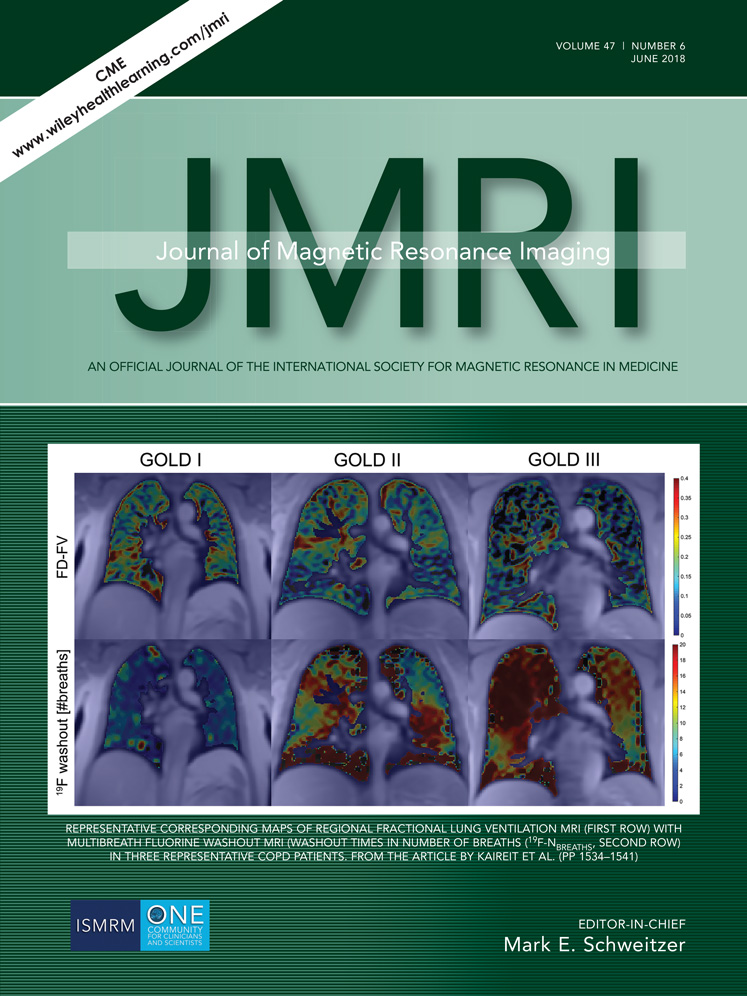Feasibility analysis of early temporal kinetics as a surrogate marker for breast tumor type, grade, and aggressiveness
Abstract
Background
Screening breast MRI has been shown to preferentially detect high-grade ductal carcinoma in situ (DCIS) and invasive carcinoma, likely due to increased angiogenesis resulting in early initial uptake of contrast. As interest grows in abbreviated screening breast MRI (AB-MRI), markers of early contrast washin that can predict tumor grade and potential aggressiveness are of clinical interest.
Purpose
To evaluate the feasibility of using the initial enhancement ratio (IER) as a surrogate marker for tumor grade, hormone receptor status, and prognostic markers, as an initial step to being incorporated into AB-MRI.
Study Type
Retrospective.
Subjects
In all, 162 women (mean 55.0 years, range 32.8–87.7 years) with 187 malignancies imaged January 2012–November 2015.
Field Strength/Sequence
Images were acquired at 3.0T with a T1-weighted gradient echo fat-suppressed-volume interpolated breath-hold sequence.
Assessment
Subjects underwent dynamic contrast-enhanced breast MRI with a 7-channel breast coil. IER (% signal increase over baseline at the first postcontrast acquisition) was assessed and correlated with background parenchymal enhancement, washout curves, stage, and final pathology.
Statistical Tests
Chi-square test, Spearman rank correlation, Mann–Whitney U-tests, Bland–Altman analysis, and receiver operating characteristic curve analysis.
Results
IER was higher for invasive cancer than for DCIS (R1/R2, P < 0.001). IER increased with tumor grade (R1: r = 0.56, P < 0.001, R2: r = 0.50, P < 0.001), as ki-67 increased (R1: r = 0.35, P < 0.001; R2 r = 0.35, P < 0.001), and for node-positive disease (R1/R2, P = 0.001). IER was higher for human epidermal growth factor receptor two-positive and triple negative cancers than for estrogen receptor-positive / progesterone receptor-positive tumors (R1 P < 0.001–0.002; R2 P = 0.0.001–0.011). IER had higher sensitivity (80.6% vs. 75.5%) and specificity (55.8% vs. 48.1%) than washout curves for positive nodes, higher specificity (48.1% vs. 36.5%) and positive predictive value (70.2% vs. 66.7%) for high ki-67, and excellent interobserver agreement (intraclass correlation coefficient = 0.82).
Data Conclusion
IER, a measurement of early contrast washin, is associated with higher-grade malignancies and tumor aggressiveness and might be potentially incorporated into an AB-MRI protocol.
Level of Evidence: 3
Technical Efficacy: Stage 2
J. Magn. Reson. Imaging 2018;47:1692–1700.




